Contents
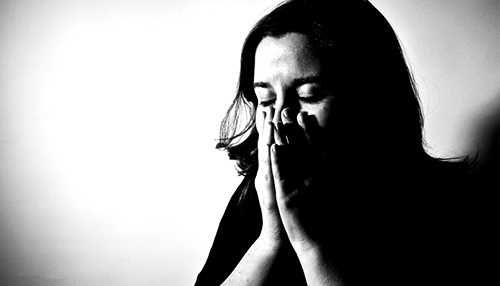
Discover the truth about mental health disorders. The human brain is unquestionably the most intricate structure known to man. Its capacity to discriminate, judge, exercise self-control, and make choices and decisions gives man preeminence among all that lives. The brain is unique because it can receive, sort, reject, or store information, which can later be retrieved from the memory bank and, with perspective, direct the activities of life.
A person’s thoughts can be colored by emotions; whether calm or worried, happy or hateful, confident or fearful influences their perspective of events. Countless functions of the brain regulate the body’s physical systems, including many in the brain itself.
Even though you can monitor the electrochemical activities in brain cells, the thoughts and emotions they produce can only be evaluated or measured by another mind. Research has revealed that these thoughts and feelings can profoundly affect the physical functioning of the body and the brain’s physical functioning, influencing the production of thoughts and emotions.
In this way, a structurally “normal” brain can function abnormally. The thought patterns directing a person that determine their experiences have more to do with their mental health than germs, viruses, or broken bones. Someone’s inability to handle life affairs, chiefly those that are frustrating or disruptive to their drives, reveals classical behaviors as forms of mental illness.
Mental Health Disorders: Factors Limiting the Fulfillment of One’s Drive

- Obstacles in the environment. Many things can occur over which an individual has no control. Examples are an appointment delayed by a traffic jam, bad weather prohibiting an outdoor picnic, financial constraints limiting the purchase of a home, and a crippling finger injury stifling a musician’s career.
- Personal limitations. An individual can lack the required capability to accomplish the desired task. Examples are a wife who desires motherhood but cannot conceive. A lack of academic ability thwarts a young man’s aims for a career in science. A girl’s desire to model is frustrated by physical defects.
- Conflicts between motives. A person can have two strong drives, one in conflict with the other. Examples might be a young man with limited time and money wishing to marry his sweetheart, yet wanting to complete the requirements for a doctoral degree; someone who yearns to live in the country but finds the only work available requires residing in a city; an individual who has a tendency to be obese but enjoys gourmet foods.
People differ in their capacity to adjust to the impossible or unattainable. One will analyze the situation and, though disappointed, accept alternatives, making the best of the problem. Another blindly persists and, after repeated frustrations, develops a warped personality.
A person with religious convictions has the advantage of confidence in the providential guidance of a supreme being. Professional help can also aid in facing limitations. A family physician can objectively discern the events that have brought the patient to their present state and impartially provide the patient’s advice.
As we get deeper into mental health disorders, we will delve into neuroses and psychoses. You might enjoy a humorous, popular definition of these two types of individuals. A radio announcer remarked: “A psychotic believes that two and two make five; a neurotic agrees that two and two make four but doesn’t like it.”
Mental Health Disorders List: Neurosis
People with neuroses are not hampered, as are those with psychoses. Still, they tend to have pent-up feelings of concern, are irritable and over-sensitive, and allow their beliefs and emotions to predominate over reason.
Anxiety and Fear
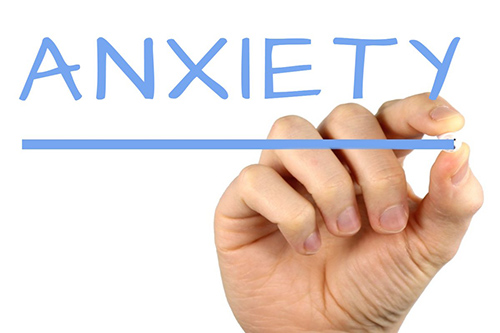
Anxiety is a type of fear that functions at a less intense level and tends to be prolonged. Fear is a reaction to external dangers. It is designed for emergencies and triggers the body’s alarm reaction. This perceived threat mobilizes the body for fight or flight. Profound changes occur within the major organ systems, but for only a short time, thus doing no long-term harm. However, anxiety persisting without an emergency can be harmful. Anxiety is an amplification of worry.
In contrast to fear, which is a response to external dangers, anxiety is a reaction to internal threats. An anxious person can have some or all the following mental illness symptoms. For example, a person dreads something intangible and lives in a causeless fear. That person is distraught without pinpointing the precise causes of their mental illness, making them fearful and nervous.
The individual feels weak; their mouth is dry; their heart beats rapidly; their breathing is fast, shallow, and sometimes tricky; they tremble easily and perspire excessively. In long-continued (chronic) anxiety states, the sufferer can have trouble sleeping, heartburn, tiredness, diarrhea, frequent urination, and mental aberrations.
Conversion reaction (hysterical neurosis): Hysterical neurosis is an extreme reaction to a situation or experience that the person strongly dislikes or fears. Instead of facing the problem, they will escape from it by developing some disorder symptoms, which will protect them from confronting the situation’s reality. Meanwhile, this individual is unaware that they have done this.
This unawareness stands in contrast to an idler who deliberately feigns some disability. The individual with hysteria, his family, and friends believe they have an actual illness. A contrast reaction is an unhealthy solution to a problem because it imitates many disease symptoms, such as paralysis, loss of sensation, blindness, loss of memory, convulsive seizures, or even loss of consciousness.
Your physician will have to tell the difference between symptoms of hysteria and those of a physical disease. One clue is the person’s lack of concern for seemingly serious problems.
Phobias
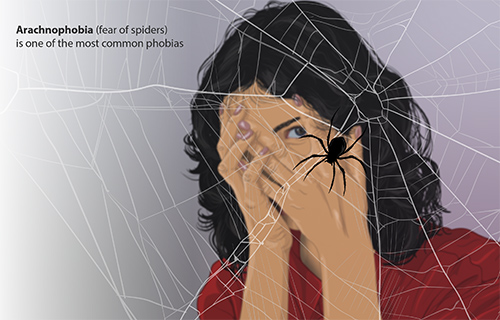
Phobias are unwarranted fears that cause the afflicted person to panic despite knowing the fear to be illogical. Nevertheless, whenever the individual is exposed to the fear-producing situation, they seem powerless to restrain their dread. Examples are the policeman who becomes afraid of the dark, the businessman who climbs fifteen flights of stairs because he fears riding in a closed elevator (claustrophobia), or the person who fears heights (acrophobia) even when a fence surrounds the site.
Phobias may involve an unreasonable fear of wide-open spaces (agoraphobia), restriction of everyday life activities because of fear of something happening, needles, dirt, germs, a specific animal, or cancer. Many people can live reasonably everyday lives with phobia. However, others restrict daily life activities for fear of something happening, and some become so unreasonable that their normal behavior is affected, resulting in serious anxiety issues.
Depression
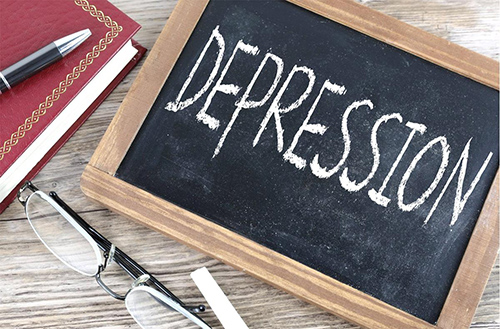
Most people have episodes of feeling downcast, sad, or depressed. Major depression, on the other hand, is a state of mind in which the melancholy mood is persistent, pervasive, and constant, continuing for weeks or months. The symptoms include crying for insufficient cause, a sense of hopelessness, loss of interest in hobbies and achievements, loss of ability to experience pleasure, loss of self-esteem, feelings of guilt and unworthiness to receive help, inability to think, concentrate, and be decisive, and thoughts of suicide or dying.
These are accompanied by physical problems, like the inability to sleep or sleep too much, a decrease or an increase in appetite, a loss or gain in weight, feelings of weakness and fatigue, constipation, dizziness, and headache.
Depression—the most common of the major mental health disorders is estimated to afflict more than 15% of Americans at a certain point in their lives. This disorder appears to run in families and is genetically inherited.
Obsessive-Compulsive Disorder (OCD)
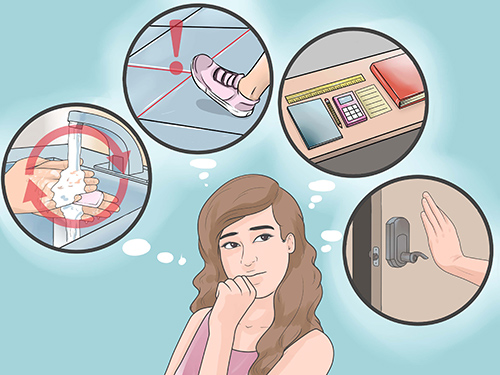
An obsession is an almost uncontrollable urge to repeatedly follow the same line of thought. Often, the idea is unwelcome, but as a person may, the sufferer finds it virtually impossible to banish it from their thinking. By contrast, a compulsion is an unreasonable urge to do something, even though the act is unnecessary and often irrational. For example, a person becomes obsessed with the thought that they carry a germ that could infect other family members and even cause their deaths.
As a result, they develop the compulsion to continually wash their hands, especially after shaking hands or touching doorknobs and before eating. Some people with an obsession are troubled continuously by obscene thoughts out of harmony with their conduct standards. Others feel they must touch all power poles as they pass them on the sidewalk.
Hypochondriasis
In this mental health disorder, the individual feels depleted of energy, weak, exhausted, tired, and abnormally sensitive to pain and other sensations that suggest various body organ ailments. Symptoms often indicate problems in the stomach, the intestines, the heart, and the Genito-urinary organs. Usually, the sufferer has a reduced ability to concentrate, is irritable, and sleeps with difficulty.

Suicide
There are many types of mental disorders, but suicide is one of the scariest because the person contemplating this course of action thinks that life is not worth living. Therefore, they believe no solutions exist to the problems troubling them; they are frustrated and allow their thoughts to center on “ending it all.”
Some people who attempt suicide do not expect to die but to be rescued from the endeavor. By this, they hope to attract attention to themselves and their plight. Others keep their plans secret and expect to succumb. Anyone who threatens suicide should be closely observed by friends and loved ones and may require a specialist or even hospitalization services.
Unresolved Grief
Unresolved grief has two forms: the person may fail to experience distress or continue to grieve for months after the loss. Grief can result from the death of a loved one and the loss of an arm or leg or the use of one’s limbs.

Normal grief consists of four phases:
- The shock lasts a short period, during which the bereaved may be stunned, express an intense wish the loss had not occurred, exhibit few emotions, or behave as if the loss had not happened (denial).
- Acute mourning usually lasts for three or more months. The person grieving now acknowledges the loss but is unreconciled to it. The person withdraws from social contacts and experiences waves of intensely sad emotions.
- Denial is often seen when the bereaved denies the loss has occurred.
- Resolution or reorganization begins when the grieving person reluctantly accepts the loss and begins to plan and resume their social interests and activities.
Unhealthy complications usually appear during the second phase. The sufferer is unable to cry, bottles up their emotions, and develops symptoms of illness. The individual’s friends and loved ones should provide sympathy and understanding and encourage the sufferer to express their feelings and resume productive activities.
The psychological process of dying and accepting the death of a loved one is comparable:
- Shock and denial, in which the person appears numb and unaware of his or her problem
- Anger, manifested by frustration and questions (to God, friends, etc.) about why
- Bargaining that includes arguing with others about the reality of the situation
- And finally, acceptance—a gradual reconciliation to the situation and acceptance of the inevitable
Here is what your physician can do for mental health disorders: Since many of the neuroses exhibit physical symptoms, your physician must first rule out any organic disease. Then, with an understanding of the problems at the neurosis foundation, they will attempt to counsel the individual.
Tics

A tic is a spasmodic contraction or twitching of a minor muscle or small group of muscles, generally in the face and mouth area. This involuntary, purposeless, and unexpected movement includes jerking the head, grunting, clearing the throat, or even vocal tics such as pronouncing a word or speaking a short sentence.
Tics, appearing in about 10 percent of children, are often hereditary and point to a neurotic tendency. Circumstantial evidence suggests that a feeling of personal inadequacy may be what causes tics. Although most disappear in time, some tics in adults persist throughout life. If you experience many types of tics, consult a professional.
Mental Health Disorders: Types of Psychosis
Psychosis is a form of mental derangement in which the individual’s thinking and behavior are irrational and irresponsible. The common term insanity applies to any psychotic behavior. What causes psychosis is uncertain. Some believe a hereditary factor exists, while others assert that a biochemical imbalance is present in the nerve cells.
Specialists generally agree that the psychotic cannot adjust successfully to life’s demands and disintegrates under stresses with which they cannot cope. Some persons with psychosis become challenging to manage and may require professional care or hospitalization.
Withdrawal Delirium (delirium tremens, DTs)

Withdrawal delirium is a serious, acute, dramatic condition that affects a habitual user of alcohol when the substance is abruptly withheld. A DT attack results in mental confusion, delusions, vivid and terrifying hallucinations, tremors, sleeplessness, fear, and profuse sweating, which may cause dehydration.
In about eighty percent of sufferers, the episode lasts three days or less and ends suddenly. In the remainder, the symptoms persist longer and disappear only to return. Up to fifteen percent of delirium withdrawals end fatally.
One of the first things a physician can do to help treat this illness is to hospitalize the patient and immediately administer medications to control their agitation. A physician will order fluids or blood by vein to combat shock and prevent dehydration or supplementary B vitamins prescribed as a helpful precaution against deficiency.
He or she will also evaluate the possibility of injury, infection, or inflammation of the pancreas or liver and provide appropriate therapy as needed.
Alcohol Amnesia Disorder (Korsakoff’s psychosis)
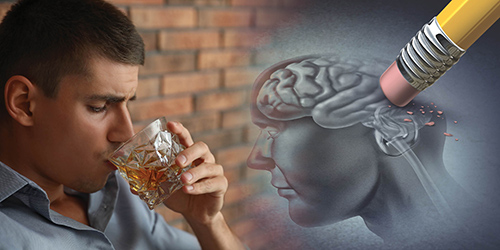
This disorder results in complete memory loss for current and recent happenings. However, older, long-established memories are still available. Other mental processes remain familiar, so the sufferer hesitates to admit they are out of touch with recent events and makes up imaginary explanations of what has recently occurred.
The psychosis results from damage to the part of the brain in which memory resides. The damage may be temporary when caused by a head injury or a subarachnoid hemorrhage. However, when it results from alcoholism or encephalitis, memory loss usually remains permanent despite treatment.
Bipolar disorder (manic depressive disease)
The definition of this disorder is characterized by mania and depression or a mixed type (mania and depression), in which there are exaggerated mood swings. The irregular shifts in mood range from extreme elation (mania) to deep depression. The symptoms of an attack are when one mood predominates and shifts to the other, or the mood swings may go back and forth in the same episode.
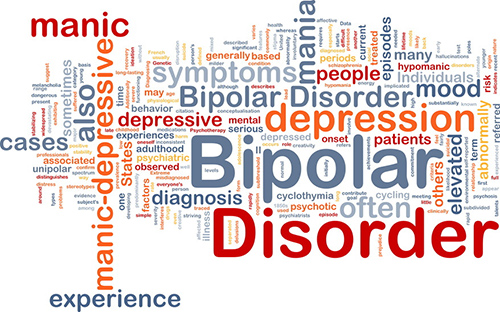
The first attack usually occurs in young adults, and heredity appears to play a role. Between episodes, the person is typically normal.
In the manic phase, the sufferer becomes increasingly excited and combines tireless activities with joy. Judgment and insight are typically low, and the person may be destructive. Displays of singing, talking, shouting, and delusions of grandeur are standard. Any restraint provokes irritation.
In the depressive phase, the sufferer feels downhearted and fearful, developing delusions of self-condemnation and, at times, attempting suicide. The sufferer sleeps poorly and, in extreme cases, can be stuporous.
A physician will have to decide if hospitalization is necessary, as would be true in any case of mental health disorders with suicidal tendencies. Untreated, an attack may last a year or more, but medication usually shortens the attack. Your doctor can suggest a test to determine the causes and prescribe medication to alter brain chemistry or advise psychotherapy. Most cases respond favorably to kind treatment in addition to a specific program or medication.
Schizophrenia
In this disease, the sufferer loses the ability to distinguish between fantasy and reality. Both their ability to think and their emotional responses become confused. The most serious of mental health disorders, schizophrenia, afflicts more than half of those in mental hospitals.

Schizophrenia is likely a result of the brain improperly processing information. The disease usually begins in young adulthood, and although the tendency appears to be inherited, only specific individuals exhibit the weakness. Periods of extreme stress and difficult situations seem to trigger the diagnosis.
The onset is often subtle; the sufferer begins to withdraw and appears preoccupied. The patient’s conversations seem patterned, but they will remain unconcerned even if brought to their attention. The schizophrenic may believe they hear voices, often unkind, and that others are listening to them think and stealing their thoughts.
As the disease progresses, delusions (such as believing they are being poisoned), hallucinations, odd mannerisms, and sometimes suicidal tendencies develop and may be violent. The sufferer lives in a world apart and laughs or smiles at inappropriate times. While there are many types of schizophrenia, only the characteristics of the main types are described.
The catatonic type is often seen as rigidly as a statue (posturing) or does things opposite to those requested of him or even opposite to those he or she usually does. The patient can exhibit an apparent stupor or be unwilling to speak. Or, again, they may become suddenly excited and engage in purposeless activity. At such times, the patient can be dangerous.
The disorganized type is often incoherent, and their thoughts and delusions are confusing, bizarre, inappropriate, and often silly.
The paranoid type is delusional, with or without hallucinations, in which the patient is being persecuted—is suspicious of others and believes they are out to harm them. Again, the delusions are usually grandiose—they are some notable character, such as the president of a bank, the ruler of a country, or an extremely wealthy individual. Their delusions can sometimes be bizarre, well organized, or even appear quite “logical.”
The undifferentiated type has disorganized thoughts and behavior—their symptoms are a mixture of all three types above. Those with chronic schizophrenia symptoms can have periods when they appear relatively normal.
Some personality traits that are not serious enough to be classified as mental health disorders can exist throughout life. Two such personality disorders are paranoid or schizoid. The paranoid is generally hostile, irritable, and suspicious. The schizoid is withdrawn, shy, and shrinks from social contact.
A physician will have to determine whether the sufferer needs hospitalization. Antipsychotic medications are available to alter brain chemistry and help relieve the symptoms of disorganized thinking. These, together with psychotherapy and friendly counseling, contribute significantly to recovery. It is essential to teach the sufferer how to cope with stressful situations to prevent subsequent attacks.
Following the acute phase, rehabilitation is essential to regain standard behavior patterns and develop the capacity to carry out life’s routine activities.
Paranoia
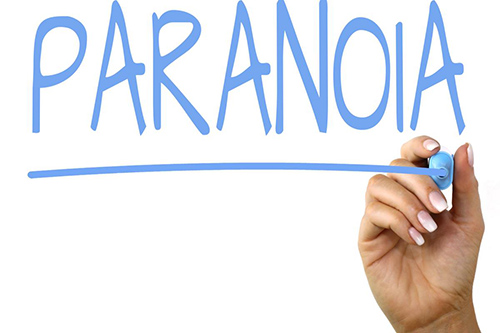
The meaning of paranoia is identified by delusions in which the individual attempts to bolster their self-esteem by assuming others are plotting against them. The patients crave recognition, having failed to obtain the acclaim they desire, and contend that others’ plotting and jealousies cause their failures.
While no one knows the cause, it appears that childhood experiences of not being socially accepted and disappointments in not gaining specific goals cause sullenness and hatred to become exaggerated into psychosis.
Paranoia often leads the sufferer to imagine themselves some great person—a king, a queen, an inventor, or a bank president. The patient can become dangerous, with a risk of bodily harm to those they feel are plotting against them. The sufferer often imagines their mate is unfaithful to them—without real evidence. Often, paranoid individuals go to court for redress of their suspected mistreatment.
Successful treatment of this and any other mental health disorders consists of sympathetic relationships more than specific therapy. Many sufferers respond favorably to kindness and sympathy from someone they can trust. But unfortunately, many paranoid persons never recover.
DISCLAIMER: All content on this website is presented solely for educational and informational objectives. You should not rely on the information provided as a replacement for advice, diagnosis, or treatment from a qualified medical expert. If you are pregnant, nursing, or have any preexisting medical concerns, you should talk to your doctor before using any herbal or natural medicines.
REFERENCES
- Hardinge, Mervyn G and Harold Shryock. “Family Medical Guide.” Hardinge, Mervyn G and Harold Shryock. Family Medical Guide. Ed. Marvin Moore and Bonnie Tyson-Flynn. Vol. Three. Oshawa; Washington, D.C.; Hagerstown: Pacific Press Publishing Association; Review and Herald Publishing Association, 1999. Three vols. 348, 349, 350, 351, 352, 353, 354, 355, 356, 357, 358, 359. Print. [Mental Health Disorders]
- National Institute of Mental Health: https://www.nimh.nih.gov/health/topics: https://www.nimh.nih.gov/health/topics
- National Alliance on Mental Illness (NAMI): https://www.nami.org/About-Mental-Illness/Mental-Health-Conditions: https://www.nami.org/About-Mental-Illness/Mental-Health-Conditions
